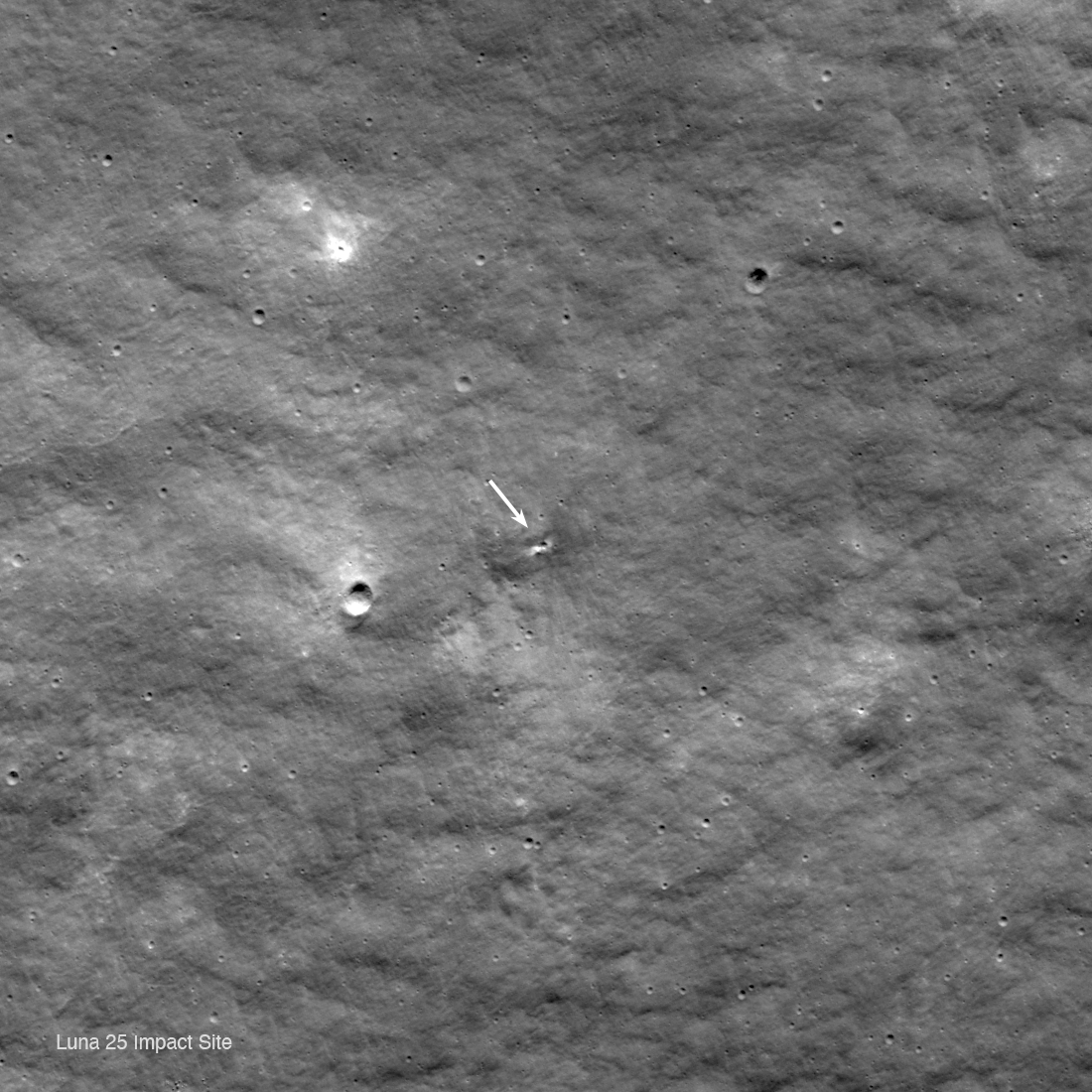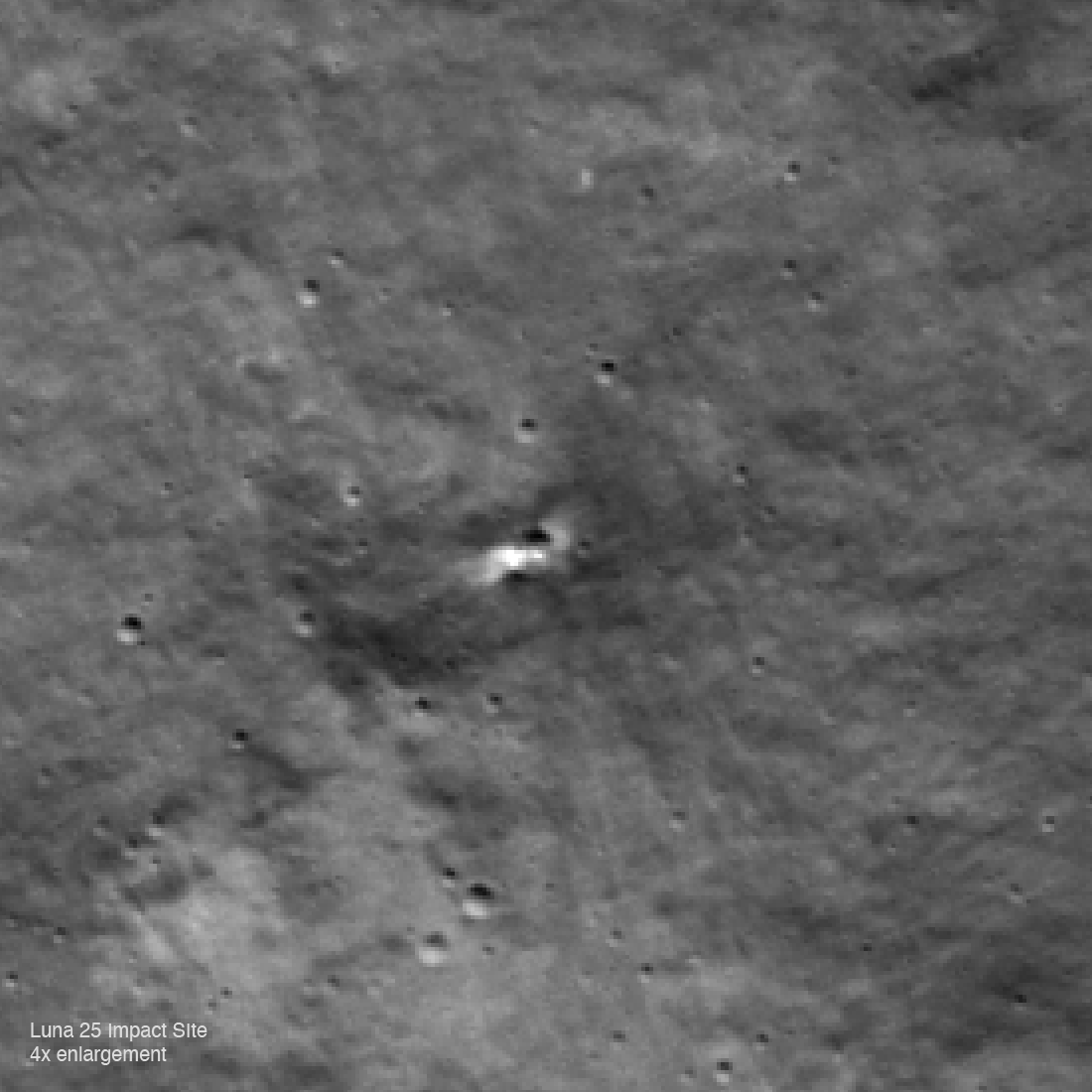
Roscosmos posted an estimate of the impact point on 21 August 2023 at 17:16:14 UTC. Due to fast action by the LROC team and the LRO Mission Operations team, a NAC six-image sequence was designed and sent to the spacecraft at the last minute on 22 August. The sequence began on 24 August 18:15 UTC and was completed on 24 August 22:12 UTC.
The LROC team compared images taken prior to the impact time and the sequence taken after and found a small new crater. The most recent "before" image was shuttered in June 2022 (M1410024427R); thus, the crater formed sometime after that date. Since this new crater is close to the estimated impact point, it is likely to be the Luna 25 crater and not a natural crater. The Luna 25 crater is about 10 meters in diameter and is located at 57.865°S, 61.360°E at an elevation of -360 meters (accuracy better than 40 meters). The Luna 25 impact point was on the steep (>20°) inner rim of Pontecoulant G crater, about 400 kilometers short of the intended landing point (69.545°S, 43.544°E).

Mosaic formed from six NAC images, centered on the Luna 25 crater. The terrain slopes downward from the lower right to the upper left. M1447540283L, M1447547309L, M1447554334L, M1447540283R, M1447547309R, M1447554334R, full mosaic 22 x 22 kilometers [NASA/GSFC/Arizona State University].
Published by Mark Robinson on 29 November 2023